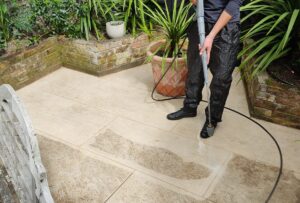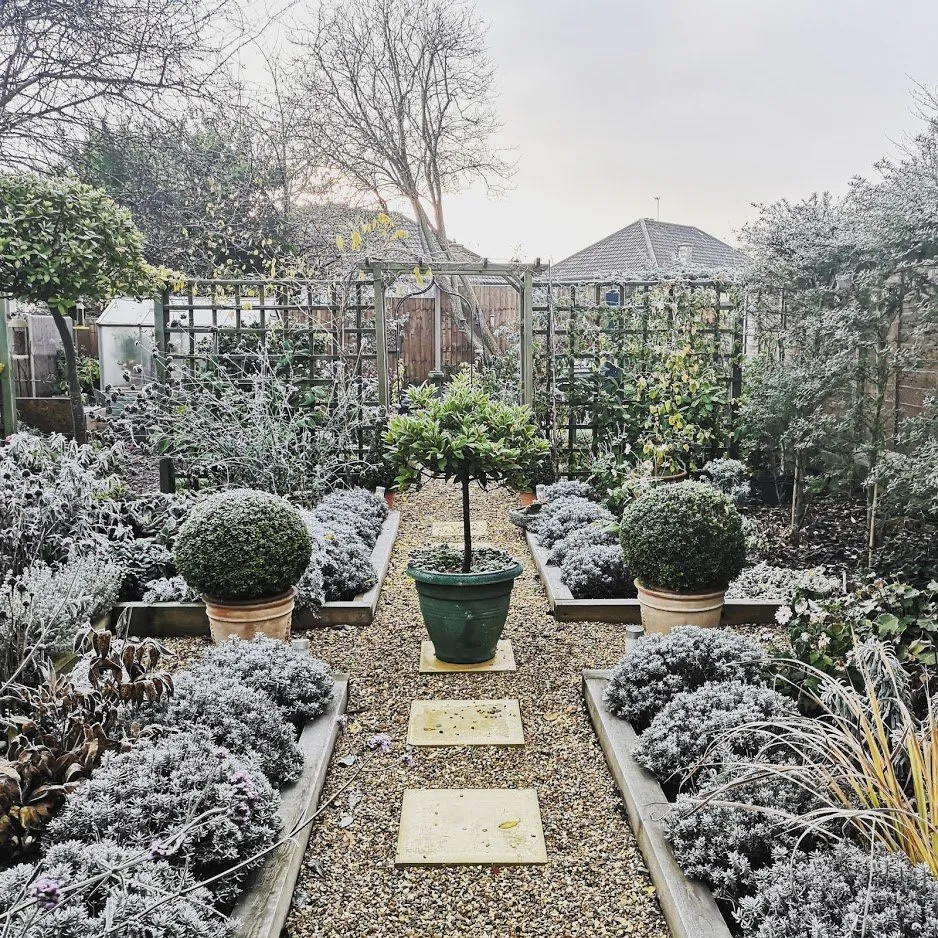
How to prepare your garden for winter?
- By professionalgardening
professional gardening2016@gmail.com
+44 7492 657585
Priory Gardens, UK

Winter garden preparations are an essential part of outdoor maintenance in the cold months. Knowing how to prep your yard can be a game-changer not only from an aesthetic point of view but also from a plant welfare perspective!
That is why our professional gardening team in London steps up to provide you with some guidance for winter preparation. On top, we have some amazing winter garden ideas for you on how to enhance your outdoor space. Learn more in this article and enjoy the cozy season with a beautiful yard!
Winter is the time for seasonal upkeep and garden clearance. Some basic garden care tasks require your attention, time, and effort to have a lush blooming, healthy garden when the spring hits.
Here are some of the things you can do as a homeowner or entrust gardening professionals with:
Removing diseased plants from the garden is important when preparing your garden for winter to prevent the spread of disease to healthy plants. Diseased plants can harbor fungal spores, bacteria, viruses, and insects that can cause disease in neighboring plants. Removing the unhealthy and sick plants will help protect the health of your garden and ensure that your plants are healthy and vibrant come spring.
Preparing your garden soil for spring is essential in order to ensure a successful growing season. The best way to prep the soil is to add organic matter such as compost or well-rotted manure. This will help to improve the structure of the soil, increase its nutrient content, and improve its water-holding capacity.
You should also remove any tiny dead or dying plants from the garden beds as well as do some weeding. Finally, you should rake the soil to break up any large clumps and remove any bigger stones or random debris. This will help to create a smooth and even surface for planting when the time comes.
When prepping your winter garden, planting seeds is an important part of the process. Sowing seeds ensures that there will be a variety of plants, vegetables, and flowers ready to be harvested in the spring. Seed planting in the late fall or early winter helps the plants to establish a strong root system and helps them to survive the coldest months.
Planting seeds also helps to replenish the soil with vital nutrients and organic matter so the garden will be full of life in the spring. Additionally, it could help to reduce the weeds and other unwanted plants that can take over empty garden beds. Last but not least, some winter prep planting helps to protect your outdoor space from pests and diseases.
Mulching plays a crucial role in preparing your home garden for winter. This gardening tasks is very straightforward and has amazing benefits for the ground plants and trees in your garden.
Check out some of the most influential things mulch helps within the winter garden:
To mulch your garden, first, follow all the previous steps for winter garden preparations – remove any dead plant material or weeds that may have grown, prep the soil, and plant your new greens.
Next, spread a 5 to 8 cm layer of mulch over the soil. Make sure that the mulch is not piled too high as this can keep air and moisture from reaching the soil and plants. Also, you should not place it too close to the stems or trunks of plants as this can cause rot. Finally, water the soil before applying the mulch to help it settle in and lock in the moisture.
Jet washing is one of the best garden maintenance tasks to do before winter strikes. It not only helps to get rid of dirt and debris but also keeps pests away and prevents mold and mildew from building up. Jet washing is a relatively easy process that can be done with a pressure jet washer.
The first step is to make sure that you are using the correct pressure washer for the job at hand. If you are using a too-powerful jet washing unit, you can damage your solid surfaces, garden furniture, and even delicate plants and plants with shallow roots. To ensure that you have the right jet washing equipment, consult the manufacturer’s instructions.
Next, you can move on to cleaning the surfaces in your winter garden. Assess the area, and focus on spots where dirt and debris have built up. Start spraying and moving the nozzle in long, smooth strokes to ensure that all zones and outdoor features are thoroughly cleaned. Remember to keep a safe distance between the nozzle and the plants to avoid any damage.
After jet washing, dry the area promptly. This will help to prevent mold and mildew from forming and will help keep insect infestations away. By following these steps, you can help get your garden ready for winter and ensure that it stays healthy throughout the season.
Cleaning and putting away your gardening tools when doing winter garden preparation is important to ensure they will be in good condition come spring. It is imperative to scrub, wipe and disinfect your tools to get rid of any dirt, residue, and build-up and to prevent rust from setting in over the cold season. Maintaining your garden equipment and tools by keeping them squeaky clean also prevents the unintentional spread of disease and pests.
To clean your basic tools, use a wire brush to remove any dirt and debris. Then wipe them down with a damp rag. After cleaning, make sure to fully dry your tools off and store them in a dry location. This will help to ensure that your tools will be in top shape for the next gardening season.
Now, let’s focus on the garden machinery. Starting with the lawn mower. In order to keep your mower gear in optimal condition and running smoothly, it’s important to properly clean and store it when preparing your garden for winter.
Start by disconnecting the spark plug wire to ensure it can’t start accidentally while you’re cleaning it. Use a small brush or air gun to remove any dirt and debris, then, use a cloth and soapy water to wipe down the surface of the mower to remove any grease or oil. Put away your lawn mower in a dry and secure place, like a shed or garage. Use a plastic cover to further protect the mowing equipment.
Taking care of your jet washing equipment is also essential to its longevity and will help maintain its effectiveness when preparing your garden for winter. So make sure to clean the jet washer after use, grease the nozzle and spray lance, check for loose connections and store the jet washing equipment properly, preferably in a dry cool storage place.
Winter garden storage is a vital part of the success of any winter garden preparation. You need to have a dry and safe place where you can put all your mowing and jet washing equipment, garden tools, and outdoor furniture.
Here are some of the best options for winter garden storage:
Storing your garden tools and machinery properly over the winter months is essential to ensure they remain in top shape and ready for use when spring comes around. Ultimately, the best winter storage option for you will depend on your individual needs, available space, and budget.
One of the most popular winter storage options for garden tools, furniture, and machinery is to keep them in a shed or a garage. Many sheds and garages have large doors, which makes it easier to get stuff in and out.
They also usually have higher ceilings, which allows for plenty of room for large items. Additionally, sheds and garages provide superior protection from the elements, such as rain and snow, which can damage your garden goods if left outdoors in winter.
A basement, storage room, or closet is another common winter storage option. Basements and storage spaces are often more secure than a shed or garage, as they are typically not accessible from the outside. This makes them ideal for storing valuable items, such as expensive gardening tools or machinery.
Additionally, closets and basements tend to have much more consistent temperatures than sheds and garages, meaning items stored in them are less likely to become impacted by extreme temperatures. The only drawback is that you actually have to bring your outdoor items inside.
A third storage option for winter garden preparation is to wrap items in plastic and store them in a dry, shaded area. This is especially useful for items that might not fit in a shed or garage, or for items that are too cumbersome or heavy to move.
Wrapping items in plastic helps protect them from the elements and provides an added layer of protection against dirt, dust, and pests. However, if you leave your things in a humid place, the covers might create the perfect conditions for mold or fungi growth.
When you winterize a garden, it probably looks a bit odd and slightly less attractive than before. This is completely normal and not something that you are obliged to settle for. The good news is, winter is the season of holidays, which also means that you can bring your place back to life with some creative landscape decisions.
Who said gardens should be boring and monotonous during the winter season? Feel free to embrace the winter spirit with festive Christmas lights! Some subtle holiday illumination can fully transform your outdoor space and improve the aesthetic of your winterized garden.
Think about how you can incorporate the lights to complement your garden aesthetic in the best way possible. Try out different combinations and types of lights. Some of the most popular types are LED strips, LED ropes, color-changing Christmas strings, large-bulb lights, animated lights, built-in pathway lights, net lights, icicles, and light show projectors.
You can also hang a mix of these illuminating decorations in your winter garden. Basically, you can go for whatever works for you, depending on your property landscape, budget, and the vibe you want to achieve.
Another creative tip to liven up your yard space and feel the spirit of the holidays is to put up seasonal decorations in your winter garden. Any type of outdoor Christmas ornaments would work. You can decorate your plants and hedges, and add some color and life to different areas in your outdoor space – the possibilities are endless.
Why put up a fake Christmas tree or spend hundreds on a cut-down tree, when you can plant one in your garden and decorate it right before the holidays? It surely is a smart choice that will prove viable and cost-efficient throughout the years. There are many advantages to growing a pine tree in your yard.
First and foremost, you will have an evergreen plant that will always provide the green wow factor and liven up the garden, even in winter when all other plants look boring and stale. But our favorite benefit of planting a Christmas tree is that you will be able to decorate it and light it up every year when the holidays come. That saves tons of money and effort in the long run.
Now that you are done with the basic winter garden preparation and you have put up the seasonal decorations to lift the spirit, set yourself up for a magical winter in the garden. Even if you do not like to spend a lot of time outdoors during the cold months, at least you would be able to get into a good mood every time you go out, come home, or look out of the window.
If you need help with winter garden prep, reach out to our professional gardening team in London, UK. We will make sure your yard is in its best condition until spring hits.
By integrating these ideas and possibly seeking out professional gardening services, your West London garden will not only mirror the latest trends but also provide a personal sanctuary that enhances your home and lifestyle.

Meet Nikolay, a talented blog and content writer with years of experience creating engaging and informative content for a variety of industries.


TO CELEBRATE OUR NEW WEBSITE WE WANT TO GIVE YOU
